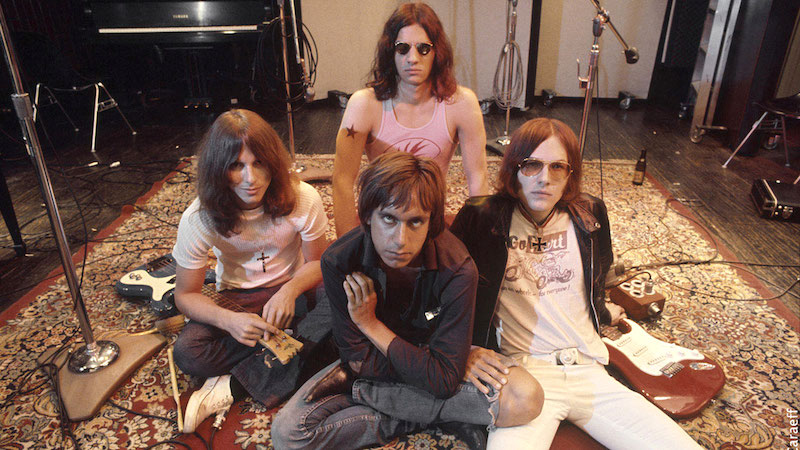
This ragtag documentary succeeds in capturing not only the frenetic energy of The Stooges, but also their wicked humour
Musicians have always played muse to American independent filmmaker Jim Jarmusch. The director’s long and rich history of collaborations include his playful partnership with the Wu Tang Clan (RZA scored Ghost Dog; both he and GZA feature in Coffee and Cigarettes), and Neil Young’s discordant guitar soundtrack to the Johnny Depp acid-western Dead Man.
Tom Waits’s gravelly voice and visage appear in Down By Law, while the music of Elvis Presley and Carl Perkins infuse his Memphis feature Mystery Train (which also stars Joe Strummer). Jarmusch’s first documentary, Year of the Horse, follows Young and his band Crazy Horse live on tour in 1996.
Another rock-royalty figure at the centre of Jarmusch’s musical universe is Iggy Pop, the subject of his second documentary, Gimme Danger. Pop has teamed up with Jarmusch twice before: he has a comic cameo as a Bible-quoting vagabond in Dead Man, and shares a smoke with Waits in Coffee and Cigarettes.
Taking its name from a track on The Stooges’s 1973 album Raw Power, Gimme Danger is a loving and lively portrait of the iconoclastic protopunk frontman and his band.
The documentary is jam-packed with insights into The Stooges’s origins and creative process. Sitting atop a chair that looks more like a throne, with a sleek mop of blonde hair and sinewy limbs, Pop recounts an early music memory: playing the drums in his parent’s trailer so loudly that they gifted him their master bedroom to practice in. He jokes that his minimalist approach to lyrics was inspired by the letters children wrote (25 words or less!) to TV persona Soupy Sales. We also learn that Pop was the first to attempt a stage dive, with a broken tooth to prove it.
Half the joy of Gimme Danger is watching archival clips of the frontman wriggle around on stage like a contortionist on acid, his belt buckle sitting perilously low on his waist. Harnessing this primal energy was what partly helped the band unlock their sound and energy, Pop says.
Documentaries sometimes fall into the trap of overusing famous talking heads that merely summarise people’s legacies, without bringing us any closer to the subjects themselves. Instead, Jarmusch relies on interviews with The Stooges to piece together their own narrative, coupled with archival photographs and rather charming cartoons.
Thrown into the mix to illustrate Pop’s hilarious anecdotes are clips from television and cinema, spanning from Ancient Egyptian epics, to Lucille Ball and The Three Stooges.
But it’s not just frontman Pop who gets ample screen time. Jarmusch charts the family tree of old and new band members, including the Ashton brothers on guitar and drums, Dave Alexander on bass guitar and saxophonist Steve Mackay—all who have sadly since passed.
Another vital creative force in the band was lead guitarist James Williamson, whose playing style is compared to a drug dog sniffing out every corner in a room. It’s a thrill to see Williamson return to the stage in 2009, after working in Silicon Valley and later suiting up as a Sony executive.
Despite Jarmusch’s long-time Stooges fandom, the film never verges on hagiography. He fleshes out how egos and addictions impaired live performances, repeatedly tore the band apart and took a few lives.
That’s rock and roll for you.
The ragtag documentary succeeds in capturing not only the frenetic energy of The Stooges, but also their wicked humour. As Pop says during his induction into the Rock and Roll Hall of Fame in 2010, “the poor people who started rock and roll are cool,” and there’s no cooler filmmaker than Jim Jarmusch to tell their story.


